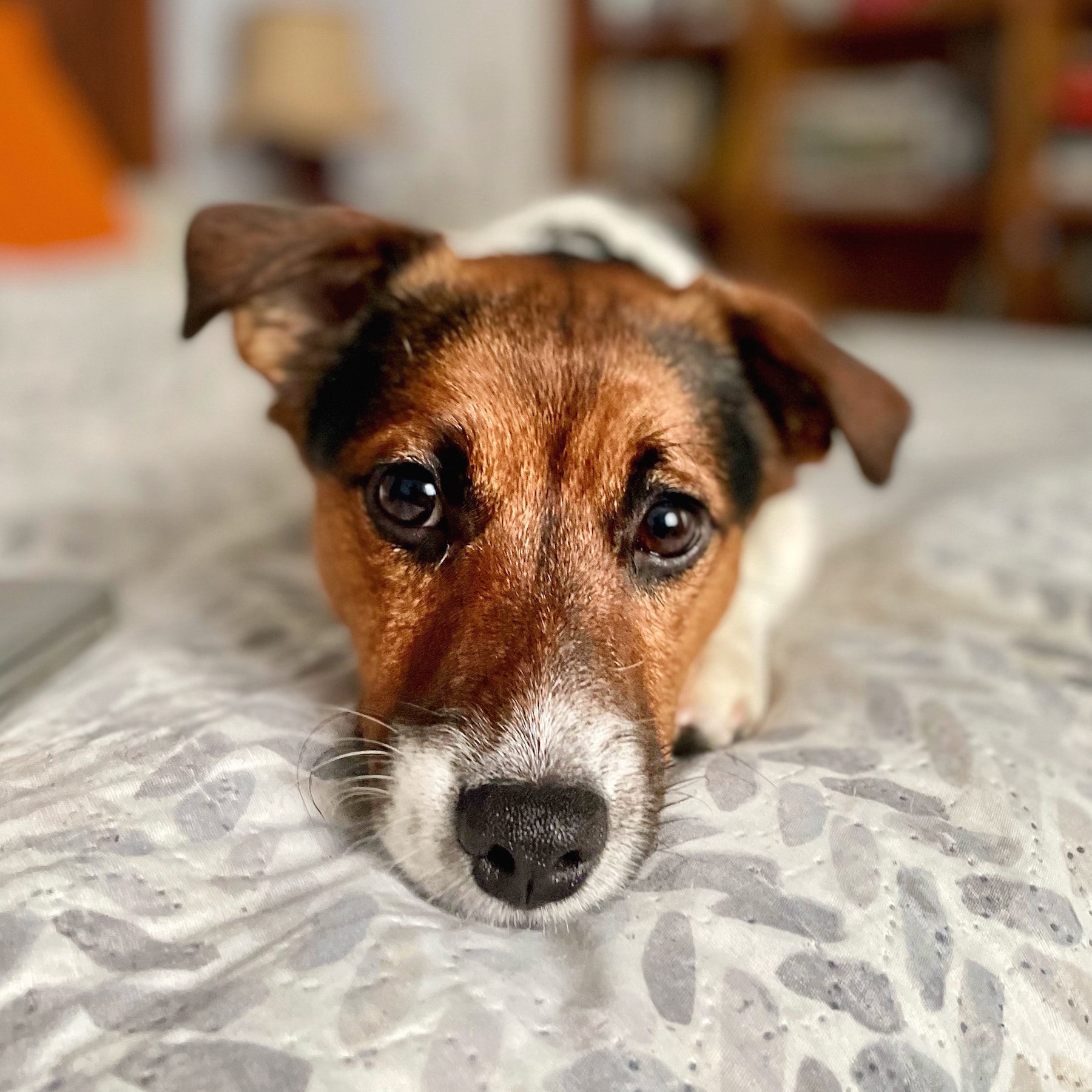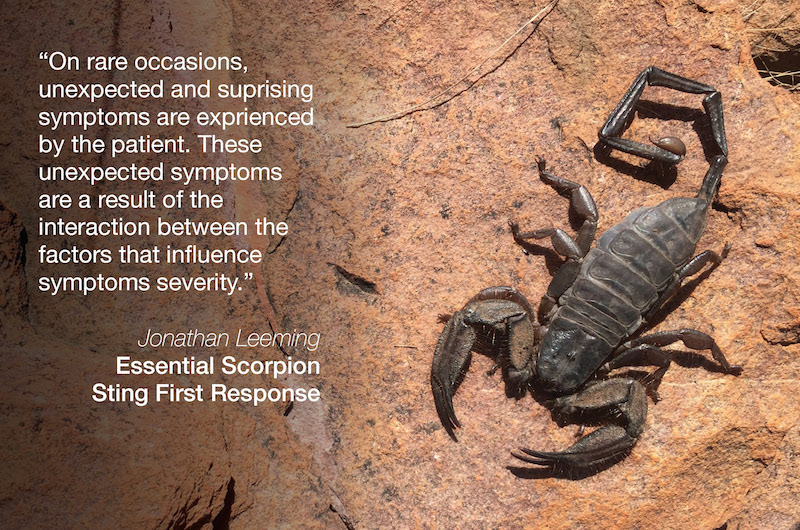It may be logical to think that all the symptoms of a sting are a direct result of the scorpion’s venom, but this is not the case. A sting from a highly venomous scorpion does not always result in class 3 or 4 symptoms, and a sting from a mildly venomous scorpion does not always result in class 2 or 3 symptoms.
In order to understand how additional factors influence symptom severity in humans, cats, dogs and other animals, consider the following:
Considering all of these factors, we can appreciate how the symptoms experienced by the patient are not solely a result of the scorpion itself; there are also other factors that need to be taken into consideration. Significant factors influencing symptom severity are more likely to push symptoms up or down a class. These factors increase or decrease symptom severity.
Consider the following scenarios. Each patient has been stung by exactly the same scorpion and received exactly the same amount of venom.

A 35 Year old male with no pre-existing medical conditions. He went to the nearest hospital within 30 minutes after the sting.

A 2 year old infant who did not receive any medical care because of misdiagnosis.

A sedentary obese 70 year old man with high blood pressure, type 2 diabetes and who smokes 30 cigarettes a day. No medical treatment was given.

A Jack Russel was stung on the mouth after he ate the scorpion. A herbal remedy was applied to the sting site.
Each of these examples result in different outcomes because of unique factors for each scorpion sting event. It is important to note that many of these factors are under our control, while other factors are not.
Consider a car accident. Each accident is characterised by different factors. The type of car, whether the occupant was wearing a seatbelt, how fast the cars were travelling, age of the patient and pre-existing medical conditions. No two car crashes are treated exactly the same, because every crash is different.
Exactly the same principle applies to scorpion stings. It is important to understand how each scorpion sting event offers a unique set of circumstances that result in a unique outcome.
It is true that some venomous animals possess venom that is so biologically active that additional factors rarely shift the prognosis up or down a notch. Just as the prognosis of jumping off a 40m high cliff onto rocks, is unlikely to be influenced by the age or any pre-existing medical conditions of the patient. There are still factors that profoundly influence the prognosis, complicate medical treatment, prolong or speed up recovery.
Interpreting and quantifying these factors is challenging because each factor does not exist in isolation, but they interact with each other. It is important to take note of combinations of these factors, especially significant factors.


This course is the product of many hours of work based upon years of experience. If you found it useful or of value, then please consider a small donation to help me offer more content like this!
I'm on a mission to reduce the burden of spider bites and scorpion stings across Southern Africa!
Newsletter | Public Events | Books & Workbooks | Presentations | Activities |Professional Development | Shop
